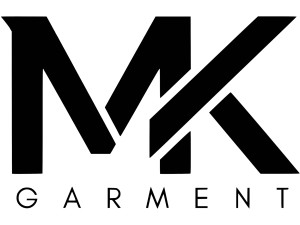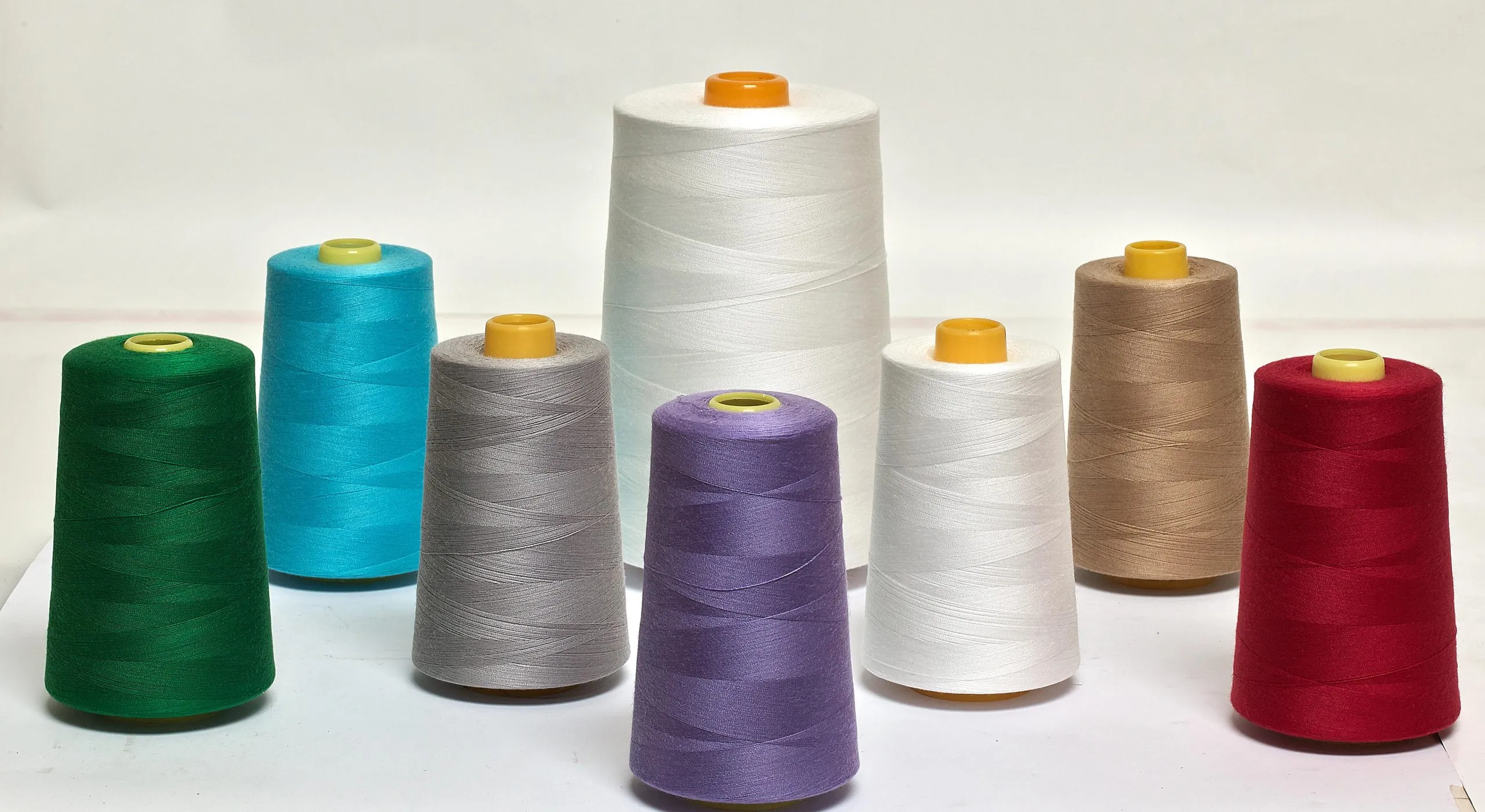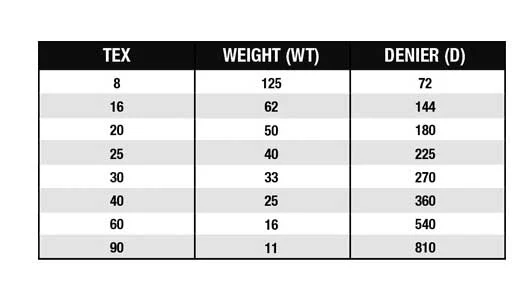
Inverted triangle frames mean broader shoulders and a narrower lower body, so you should soften your shoulder line, add volume below, and create balance with clean tops and deeper necklines. Favor wide-leg bottoms, A-line skirts, and V-necklines to draw the eye down, and avoid shoulder pads, puff sleeves, or high necklines that amplify width. Use color and texture on the lower half to make your proportions feel even and modern.
How to Know If You’re Inverted Triangle
- You typically show broad shoulders or a fuller bust with a straighter waist and narrower hips, so visual weight concentrates above the waist. Tops often feel tight across the shoulders while bottoms sit roomier; a shoulder-to-hip ratio around or above 1.05 often signals this shape. Many wear sizes where the shoulder measurement is 3–8 cm larger than the hip measurement.
- Your shoulders/bust are wider than your hips.
- Your waist is straight with little curve.
- Your hips and thighs are narrower.
- Tops often feel snug across the shoulders, while bottoms feel roomy.
- You look best when outfits add shape to the lower half.
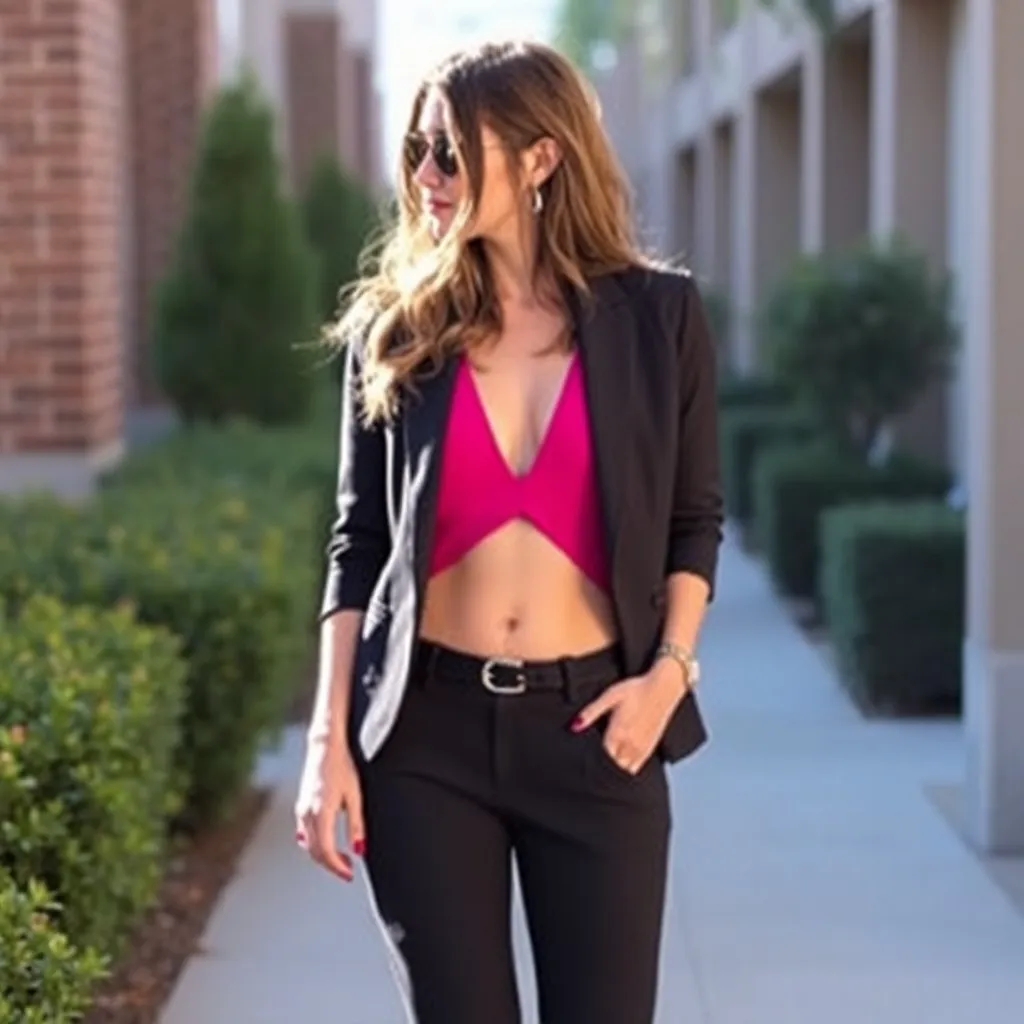
Core Styling Goals
Soften the upper frame, add proportionate volume to the lower half, and subtly define your waist: choose V, scoop, or asymmetric necklines, collarless or raglan sleeves, and bottoms with pleats, A-line cuts, or wide legs. Use darker, matte tops and brighter or printed bottoms to pull focus downward; mid- to high-rise waists lengthen the leg line and restore balance.
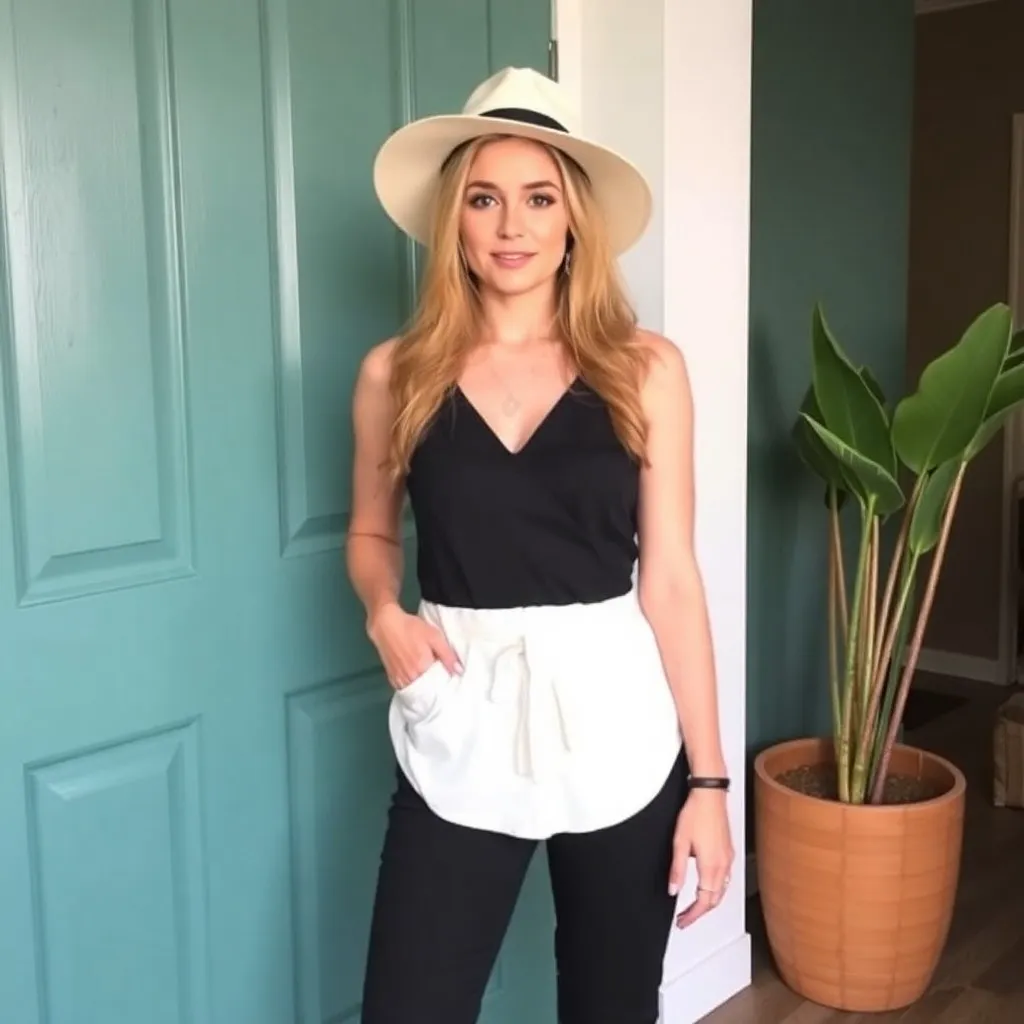
You can pair a silk V-neck blouse with a pleated midi skirt or wide-leg trousers in textured denim to add roughly 20–30% more visual volume below the hip line; a slim 2–3 cm belt creates a gentle waist without chopping your torso. Favor drapey fabrics like crepe, rayon, and soft denim, and avoid shoulder pads, puff sleeves, and high necklines that increase upper-body width.
- Break up shoulder width with deeper or asymmetric necklines.
- Add volume on the bottom: wide legs, pleats, ruffles, A-line.
- Keep tops simple and clean to avoid bulk.
- Use color and print on skirts and pants to draw the eye downward.
- Create a gentle waist with soft tucks or light belts.
What to Wear (and Why)
Recommended Tops
Opt for V-neck, deep square, or asymmetric necklines and raglan or dolman sleeves to eliminate sharp shoulder seams. Choose soft drape fabrics like silk crepe, modal, or lightweight rayon that skim the body; try a relaxed cropped knit paired with high-rise bottoms for a balanced silhouette. Keep color and ornamentation minimal on the chest—dark, matte tones or subtle vertical seams (princess seams, single button plackets) lengthen your torso without adding bulk.
- Simple, clean tops with minimal detail across the shoulders.
- V-neck, scoop, deep square, or asymmetric necklines to soften width.
- Raglan or dolman sleeves (no sharp shoulder seams).
- Soft drape fabrics that skim, not stiffen, the shoulder line.
- Cropped-but-relaxed knits paired with high-rise bottoms to lift the waist.
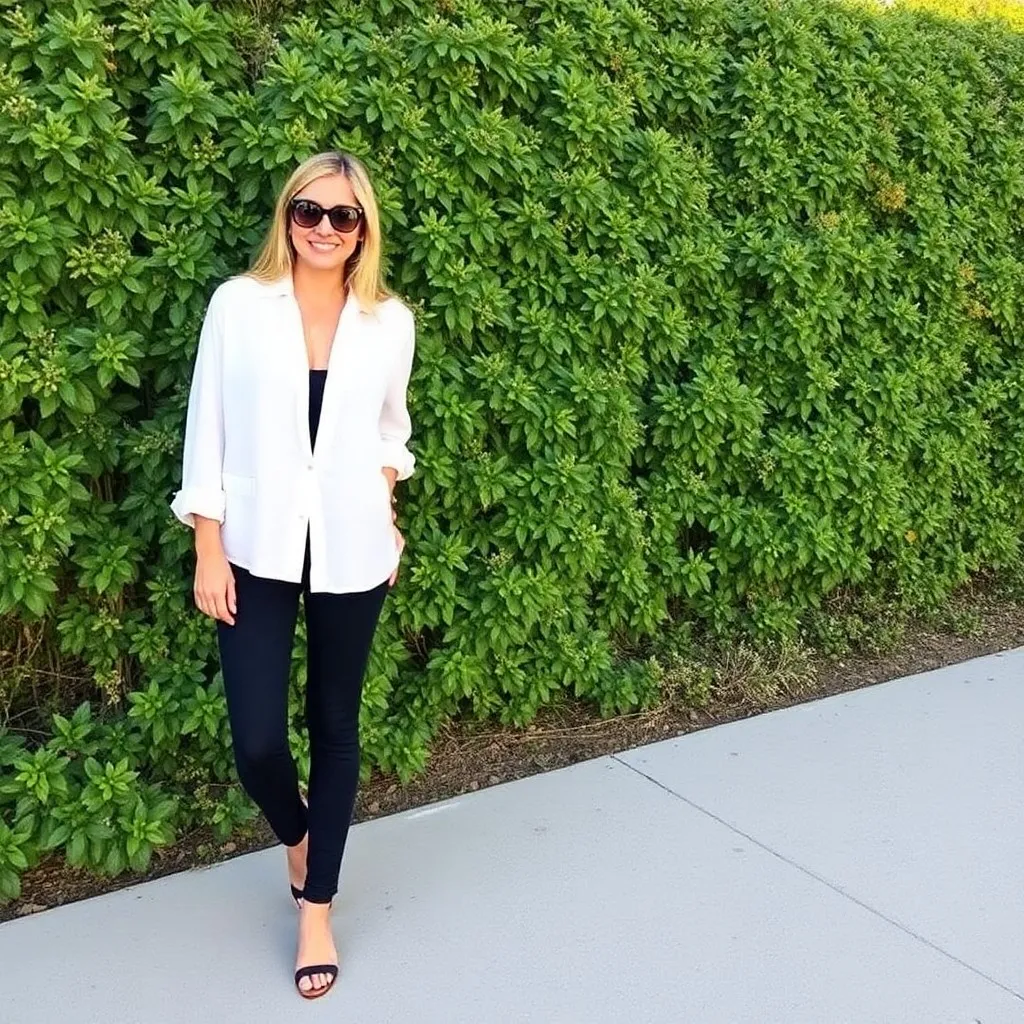
Ideal Bottoms
Pick mid- to high-rise bottoms that create a longer leg line: wide-leg trousers, palazzos, barrel pants, or pleated and A-line skirts work best. Use volume-building details—front pleats, patch pockets, and soft gathers—and embrace brighter colors, bolder prints, or lighter washes to draw the eye downward. Aim for skirt lengths from just above the knee to mid-calf to optimize proportion; avoid super-skinny silhouettes that leave your upper frame unbalanced.
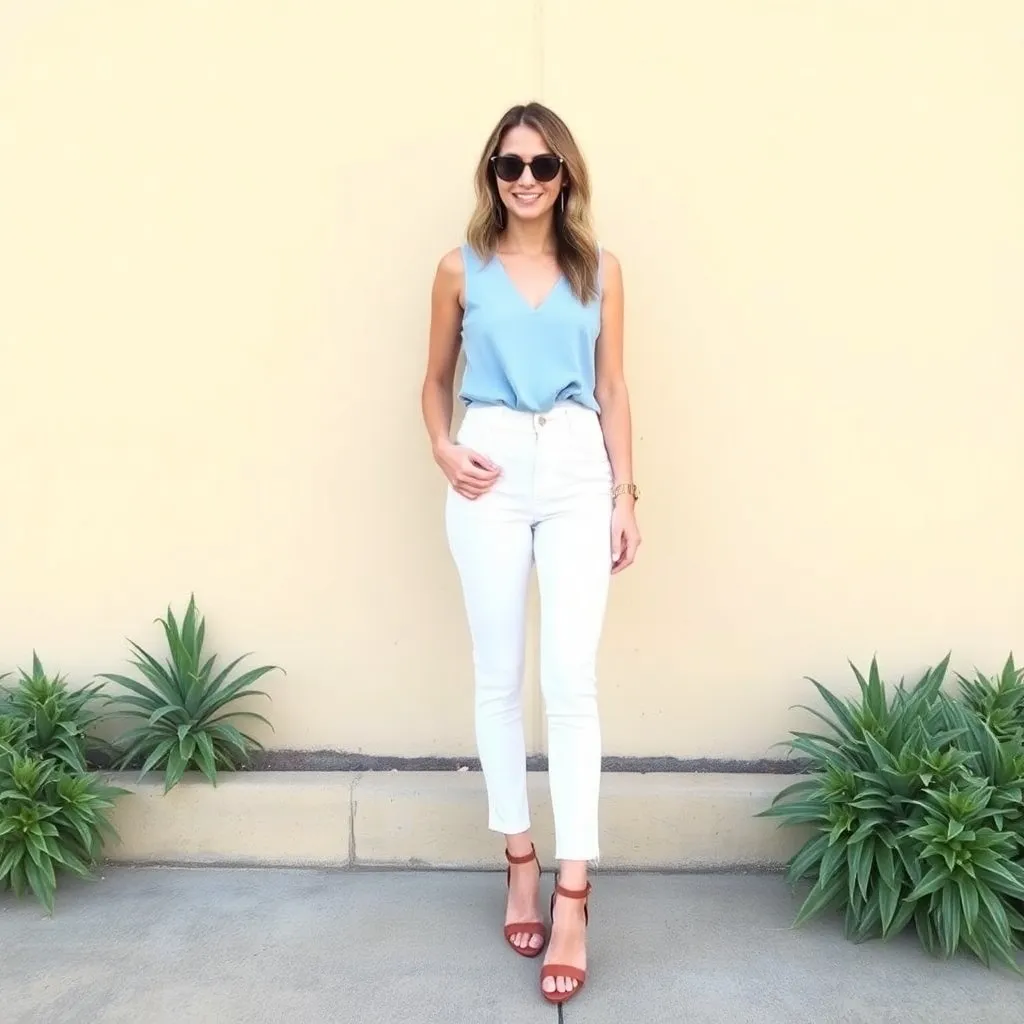
For fabrics and proportions, choose denim (10–12 oz) or twill for structured volume, lightweight wool blends for trousers, and 100% cotton or linen blends for breezy A-lines. Try 2–3 pleats across the front for movement, a hem opening of at least 24–30 cm on wide-leg pants, and mid/high-rise waistlines sitting 3–5 cm above your natural waist to visually lengthen legs. Use pockets and prints strategically—place them on the hip or thigh to create weight where you need it.
- Wide-leg, palazzo, or barrel pants to add visual weight.
- Pleated, ruffled, or A-line skirts for volume and movement.
- Cargo, patch pockets, or front pleats to balance proportions.
- Bright colors, bold prints, or lighter washes to pull focus downward.
- Mid/high-rise to create a longer leg line.
Dresses & Jumpsuits
Choose pieces that narrow your upper silhouette and add weight below: A-line or fit-and-flare dresses with pleats or panels, and jumpsuits with wide legs and low necklines create balance. Aim for skirt lengths from knee to mid-calf to increase hip presence, and prefer fluid fabrics like crepe or viscose that drape rather than stiffen. Use belts or soft tucks to define your waist without adding shoulder bulk.
- Fit-and-flare and A-line dresses that start narrow up top and open below.
- Wrap dresses with V-necklines to break up the chest and define the waist.
- Bias-cut slip dress + fluid cardigan for soft vertical lines.
- Jumpsuits with wide legs and a simple, low neckline.
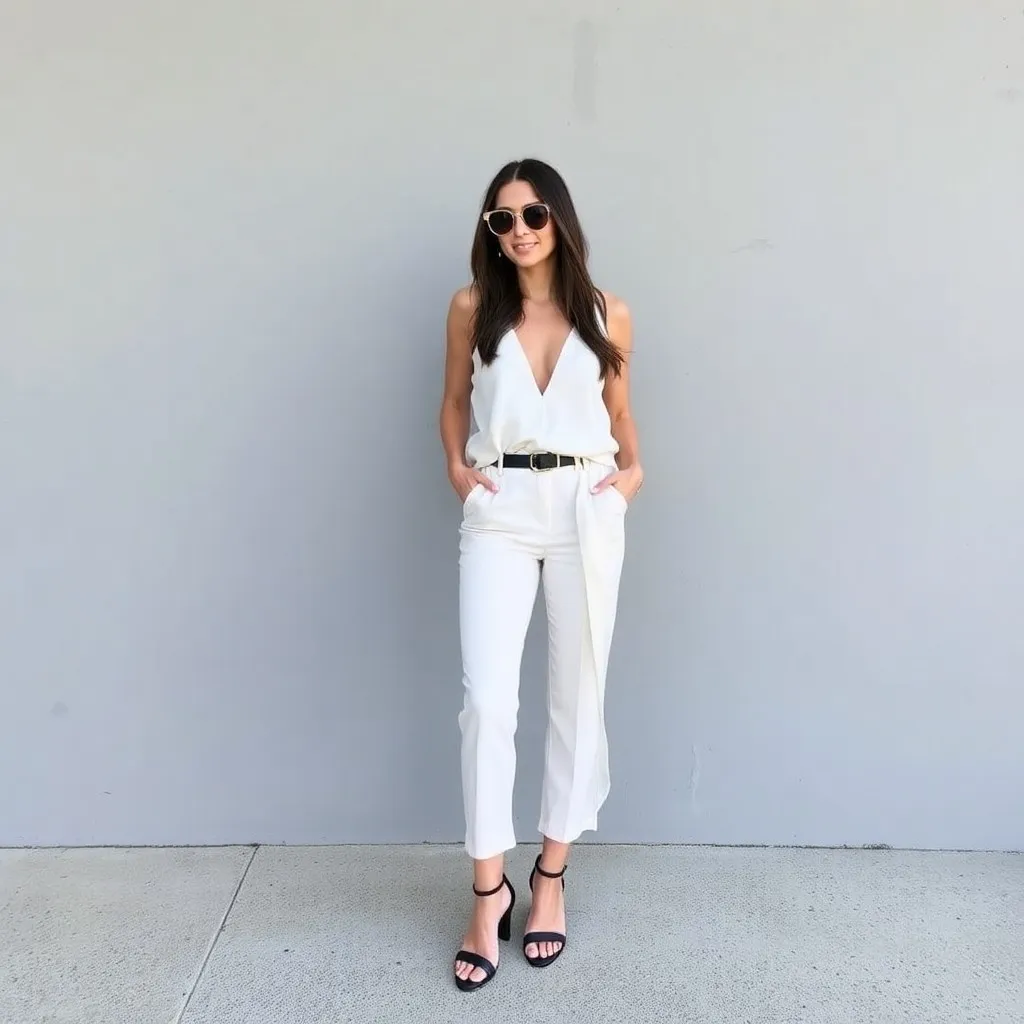
Jackets & Layers
- Collarless or shawl-collar jackets to reduce shoulder emphasis.
- Single-breasted, lightly structured blazers (avoid sharp padding).
- Hip-length or longer layers to add weight at the lower half.
- Keep layers open to create a slimming vertical line.

Fabrics, Colors & Prints
- Matte or darker tops; brighter/printed bottoms.
- Vertical details (plackets, seams) on top to lengthen, not widen.
- Texture below (twill, denim, boucle) to build volume.
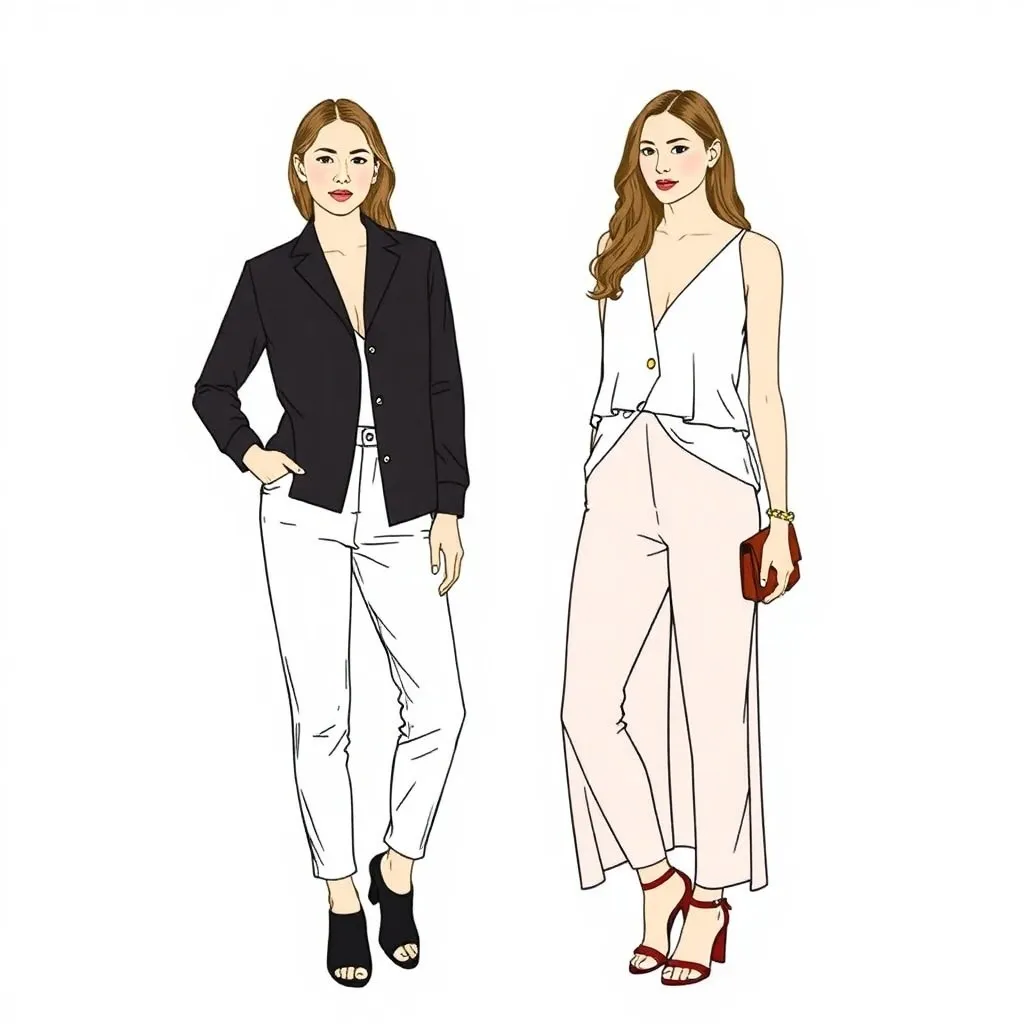
What to Avoid
Overloading the top half undoes your work: shoulder pads, puff sleeves, heavy epaulets or cropped jackets that stop at the widest part will make your shoulders read even broader. Pairing those with ultra-skinny bottoms leaves no visual weight below, so choose fuller skirts or wide-leg pants to restore balance instead.
- Shoulder pads, puff sleeves, or strong epaulets that add width.
- High necklines (turtlenecks, tight crews) that crowd the chest.
- Heavy embellishment on the shoulders or chest area.
- Super-skinny bottoms without balancing volume.
- Cropped jackets that stop at the widest part of the shoulders.
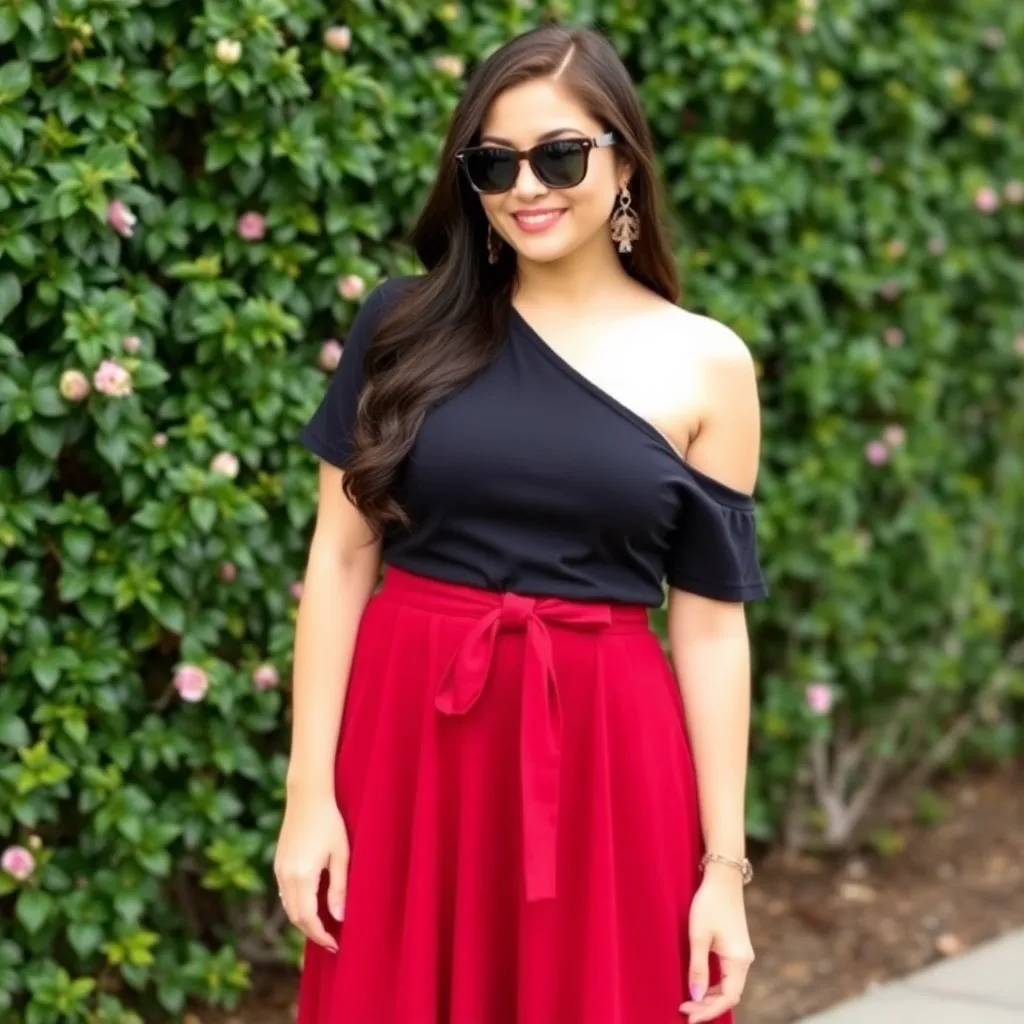
What Not to Wear
Avoid high, tight necklines like turtlenecks and boat necks, structured tops with visible shoulder seams, heavy embellishment across the chest, and cropped blazers that hit at the clavicle. Skip super-skinny jeans or pencil skirts without volume—those styles keep the eye at your shoulders instead of pulling focus downward.
Poor Fit Indicators
Signs your garments are working against you include shoulder seams sitting more than 1 cm (≈0.4 in) off the shoulder edge, fabric pulling across the bust, gaping buttons, sleeves that ride up, or pants that cling without movement. These issues accentuate width and break the smooth lines you want.
Quick fit tests: raise your arms, sit, and bend forward—if seams pull or the neckline gaps, the cut is wrong. You should be able to slip one finger between chest and fabric at the front. Tailoring fixes like adjusting shoulder placement, adding darts, or choosing raglan/dolman sleeves help; trade skinny legs for a 20–30% wider silhouette (pleats, flares, or wide-leg trousers) to add necessary lower-body volume.
Final Word / Conclusion
Lead with clean tops, deep necklines, and volume below. Use color and print on the bottom to shift focus and balance your frame. Keep shoulders soft, lines vertical, and layers open. With a few smart choices, every look feels even, modern, and easy to wear.
